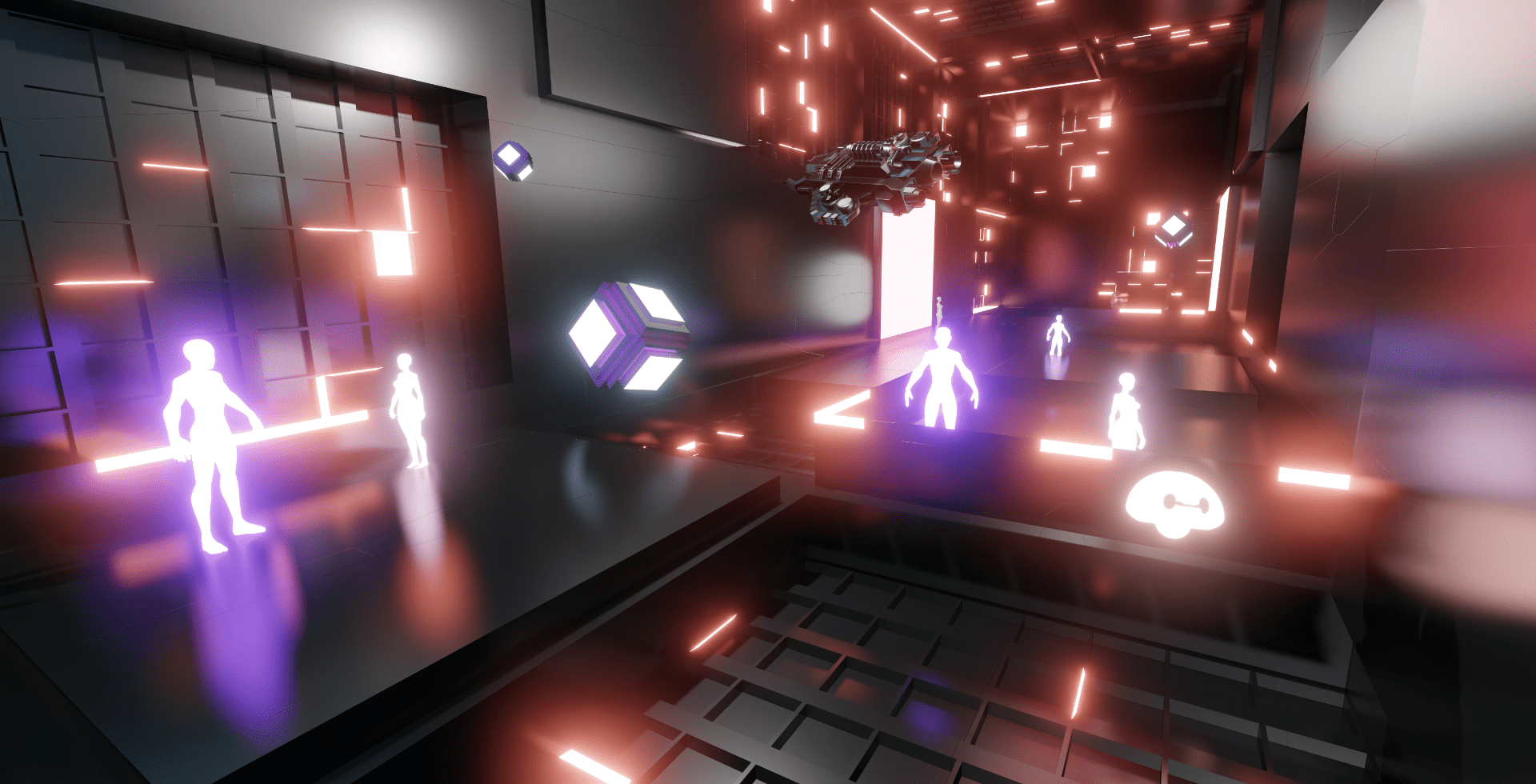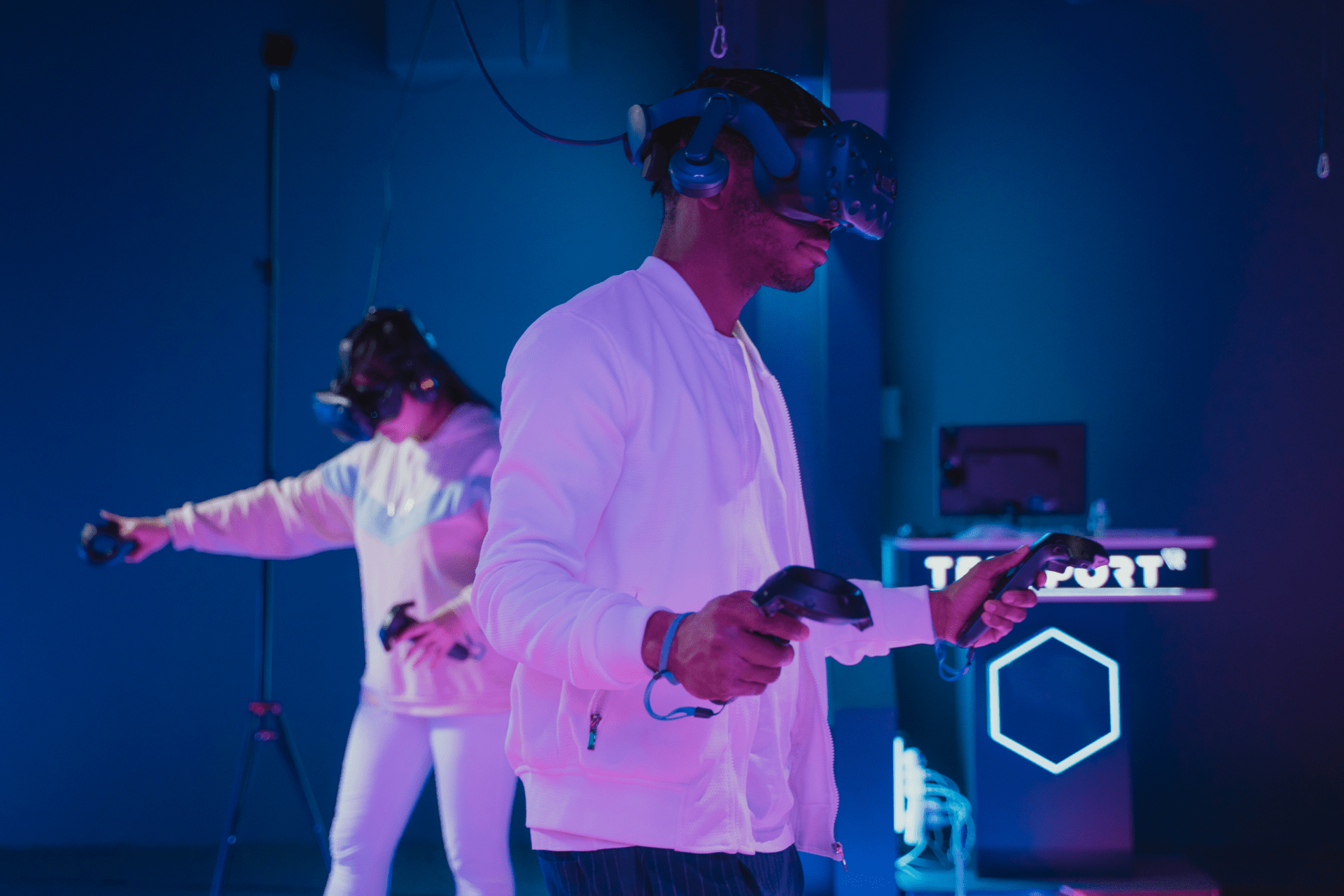In October 2021, the CEO of Facebook, Mark Zuckerberg, drew the attention of the entire world when he spoke about a major future investment of the company.
In his presentation, he spoke about the metaverse and what his company will do to strengthen its position in this rapidly developing market. The company even changed its name to Meta to reflect this strategy.
The concept of metaverse has been around for a while, and the term originates from a 1992. science fiction novel Snow Crash. So what exactly is the metaverse? And why would one of the biggest corporations in the world decide to go through a full-fledged rebranding process to highlight their intentions regarding the metaverse? Is this market really that valuable?
We’ll dive into these questions shortly. First, let’s try to define the metaverse and see what it’s all about.

Defining metaverse
There is no such thing as a single, broadly accepted definition of the metaverse. The metaverse basically represents a collection of technologies that can take very different shapes and forms. And since the development of the metaverse is basically still at the beginning, some of these shapes and forms are yet to be discovered.
In its essence though, the metaverse is a network of digital worlds that are interoperable, open for exploration, and that support continuity of all aspects of the world, even when a user temporarily leaves the metaverse. It also entails the capability to host synchronous interactions of a large number of users without delay.
Moreover, one of the key aspects of the metaverse is immersion. Those participating in the metaverse should feel like they’re actually present in the digital universe, and this is achieved thanks to the innovations in AR and VR technologies.
In a way, the metaverse is a chunk of cyberspace that offers highly immersive, persistent, and continuous experiences that lie on the border between the real and the digital world. The term “metaverse” is used both to denote a single, independent virtual universe (of a video game, for example) as well as the collection of all these universes that will hopefully be mutually compatible.
If this all still sounds vague, it’s because it is. The technologies needed to support the metaverse on a large scale are still quite underdeveloped. This means we still don’t know much about the full potential of this concept nor what exactly we should expect from it. But some early examples and applications have been around for a while and they’re a good signpost for now.
So let’s try further grasping the idea of the metaverse by pointing out some of its main use cases.
Use case 1: Video games of today
Some of you, especially gaming enthusiasts might have noticed that some traits of the metaverse already exist in some video games. And undoubtedly, games such as Minecraft, World of Warcraft, Roblox, or Fortnite do have many elements of a metaverse. It’s safe to say that for a lot of people, gaming can be seen as an entry point to the metaverse.
They do support mass synchronous interactions, encourage independent exploration and creation, and some of them are quite immersive as well. A person playing World of Warcraft is definitely absorbed into it, even without a VR headset.
Modern video games are a rudimentary representation of what we could expect from the metaverse in the future. But to engage participants in a way that feels truly real, we’ll need immersive technologies such as AR and VR to improve and get seamlessly integrated into high-quality video games.
Use case 2: Full-fledged metaverse environments
Reproducing real-life experiences
Now, although some of these games showcase certain features of the metaverse, it should actually be much, much broader than that. Today’s video games possess just a small part of all the functionalities and possibilities that the metaverse is supposed to offer.
The metaverse, in general, aims at reproducing basically every aspect of your life. First of all, this means they’ll be offering users a rich social life. You’ll be able to visit virtual parties, concerts, galleries, or comedy clubs with your friends and meet other, actual people who are participating in the virtual world through their avatars.
So you can freely connect and interact with real people in a virtual setting that largely resembles a real one. At some stage of the development of immersive technologies, you shouldn’t be able to see the difference, or at least you’ll be able to completely ignore it.
In this sense, metaverse as a whole will look more like Second life, a 2003. virtual world game that allows most of these “real-life” functionalities. There will of course also be metaverse gaming projects that are more specific and narrowly focused, but this is not what excites experts and everyday users the most.
Taking care of the in-game economy
In order to fully replicate real-world relations and experiences, the metaverse developers have to pay utmost attention to the in-game economy. If they play their cards right, selling in-game items and accessories may amount to a huge part of their revenue.
But it goes beyond buying a new hat for your avatar that you can wear to the party. You’re already able to buy land in some metaverse games and then create residential or commercial buildings with virtual shops and companies.
Nike even purchased a virtual sneaker company in 2021 to be ready to sell virtual shoes as soon as the demand for them in the metaverse starts rising. We’re still not sure how exactly this economy will work and how it will be regulated once it gains more traction. Probably the best option will be to build these worlds using blockchain technology, for reasons we’ll get to in a minute. But first we’ll see another major use case for the idea of the metaverse.

Use case 3: A new concept of workplace
Big tech companies diversifying their investments
Apart from Meta which plans to invest billions in the metaverse in the near future, there’s another big player on the market as well – Microsoft. Sensing that gaming could be a good way to initially attract a broad population to the metaverse, they bought Activision Blizzard for as much as $68 billion. The fact that Microsoft also owns Minecraft and Xbox won’t hurt their chances as well.
And this is no surprise, as we expect the metaverse to be made out of a number of smaller metaverse platforms made by rival companies. But Microsoft has another advantage – the millions of business users that use their Microsoft Teams app.
Thanks to solid infrastructure and a massive user base (around 150 million people and counting), Microsoft plans to take business communication to a whole new level – to the metaverse. Of course, Microsoft is not the only one attempting this, and there’s understandably a lot of hype around this particular project.
The future of business communication
Using VR technology, Microsoft plans to enable coworkers to share a virtual room with each other’s avatars, communicate, cooperate, and give presentations. You’ll be able to use a number of features that are already employed in Microsoft Teams, in a fully immersive way.
For instance, you could be projecting your shared screen onto a virtual wall, switching between the slides, or zooming in or out with such ease that the virtual world will look like an enhanced continuation of the real world. You’ll also be able to use AR technology to project your entire workplace onto a pair of glasses and feel like you’re physically there although you’re sitting at home.
This could bring many benefits to companies and employees alike. We’ve seen remote work can be quite efficient if you eliminate obstacles in communication. These technologies will unquestionably improve business communication and help nurture better relationships between coworkers, even when working remotely.
Building metaverse on a blockchain
There’s still a very important question of the most appropriate underlying technology for the metaverse. As a new and still unexplored concept, it carries a lot of risks. The metaverse will inherit basically all the problems that affect social media, but they’ll be amplified tenfold because of the immersive nature of this technology.
For instance, privacy could be a big issue, especially with market leaders like Meta – a company that had a fair share of its own issues with data protection in the past. And the lack of formal governance may also lead to online harassment, financial scams, identity thefts, and probably some new forms of cybercrime. Retaining some rules and order in this new, unregulated universe will be a huge task for metaverse developers. For all these issues and more, the answer might be simple – blockchain technology.
What is a blockchain?
Blockchain became widely known as a technology that hosts bitcoin. Since then, thousands of cryptocurrencies have been developed thanks to this technology. In general, using a digital currency as a payment method in a digital world seems to make a lot of sense from the very beginning.
Blockchain is, in essence, a digital ledger that stores records of all the cryptocurrency transactions made on the network. These transactions aren’t validated by any centralized system or a single institution. They are verified by a large number of nodes distributed all around the world and owned by different users of the network.
The protocols programmed in the code are executed automatically so there’s very little room for scams. In order to hack the system, you’d have to gain control of at least 51% of all the devices in the network, which is virtually impossible.
NFT란 무엇입니까?
Apart from cryptocurrencies, blockchain technology can also support a new type of digital asset – NFTs. Without going too deep into the science of NFTs, let’s just say an NFT is a token built on a blockchain, but it’s not easily fungible and convertible like cryptocurrencies. NFTs are built using different protocols from cryptocurrencies and they’re supposed to be unique tokens.
Due to this property of uniqueness, an NFT is a piece of code that is conveniently used as a unique proof of ownership of a digital file. By owning an NFT you basically own a license to a certain digital item, usually a work of digital art. NFTs can be bought and sold by network users, and their trade is also regulated by a decentralized structure that validates transactions on a blockchain.
But how do the blockchain and the NFTs affect the metaverse?

3 reasons why metaverse should run on a blockchain
1. NFTs can help the metaverse economy run smoothly
Firstly, the blockchain and the NFTs offer great, sustainable solutions for the inner workings of the in-game economy. In the metaverse, once you buy a piece of clothing or a car in a certain world, it’s very important that you really own it.
Namely, in most games today, if a game shuts down or a game studio decides to take your digital asset away for any reason, you’ll lose the weapon or the skin you bought. Most users and proponents of the metaverse think that should be avoided, and that the digital items that players buy should be their property, and not the game studio’s.
This is easily achievable and quite handy if you use NFTs. Every little item you buy in a metaverse could be a separate NFT, so proving ownership of digital assets or trading them would be routine. Also, people buy them using cryptocurrency, and they’ve already been successfully used as a digital asset in a fully digital environment. Thus they seem like a great candidate to play a key role in the heart of the metaverse economy.
2. NFTs are interoperable
There’s another crucial argument for NFTs in the metaverse. Namely, they are interoperable, which means they could be used on different metaverse platforms. So if you buy shoes or a jacket or even a piece of land in one virtual world, you should be able to transfer it to a completely different one and use it there seamlessly.
This is extremely important as we’ve already seen different tech giants building their own parallel worlds. So without blockchain, you’ll probably just have to hope these companies will allow such a thing as the transfer of assets from one metaverse to another. And we shouldn’t rely on that. With blockchain and the NFTs, we’ll have the technology that can carry out these transfers and also offers a decentralized way of governance and communal decision-making across different virtual worlds.
The capability to move your assets around different games and worlds can be vital. It would help users feel like they’re in control of what they own and where they’ll go in the metaverse, making the whole experience a lot more pleasant.
3. Blockchain technology boosts security and privacy
As it was mentioned, blockchain has a built-in safety mechanism which makes it incredibly hard to hack. This helps increase security on at least three levels:
- Security from fraud and all kinds of financial scams.
- Better data protection and more privacy.
- Better security from harassment, cyberbullying, and other misconduct that happens in the virtual world. The decentralized network could bring a fairer system of governance and control. Today, we have similar issues on social networks and they’re normally being resolved by the social network’s centralized internal control. So far, the results have been very poor.
In a world where we’re supposed to live our parallel, virtual life, all these things will be of huge importance. Blockchain technology provides a great basis for resolving all these key issues.

마지막 생각들
The metaverse is the idea that belongs to the future. If even a fraction of anticipated innovations actually happens, it’ll mean a great change in the way we interact with technology and other people, but also in the way we live our everyday lives.
As with all other large technological shifts, we’ll have to carefully choose tech solutions, methods, and policies that’ll best suit the metaverse. We have to start thinking about these issues on a large scale as soon as possible if we wish to make the metaverse an enjoyable and welcoming place in the years to come.
FAQ – what is the metaverse?
What exactly is the metaverse?
The metaverse is a part of cyberspace that consists of many interconnected virtual worlds in which people participate by using VR and AR technology. It should be fully immersive for a large number of players/participants and offer a wide range of activities and experiences that seem real enough to deeply absorb and engage the users.
What is the most popular metaverse?
This is hard to pin down as it’s not easy to define metaverse rigorously. Some video games like World of Warcraft, Minecraft, or Roblox have a huge user base and they do have some elements of the metaverse. Second Life is also a huge platform and it also does a lot of things that metaverses are supposed to do. As for metaverses built on blockchain, among the most popular ones are Decentraland, Sandbox, NFT Worlds, and Worldwide Webb Land.
What is the metaverse NFT?
Metaverse NFT is an NFT you’d use in the metaverse environment. NFTs, as non-fungible tokens that prove ownership of digital files, can play a huge role in the metaverse economy in the future, together with cryptocurrencies.
What is land in the metaverse?
In the metaverse, a piece of land is most conveniently represented as an NFT. This way it can be easily bought and sold, and you can also build objects on the parcel you purchased. The price of virtual real estate is on a steady rise as individuals and companies alike are seeking opportunities to invest in this growing market or simply have fun in the metaverse.


